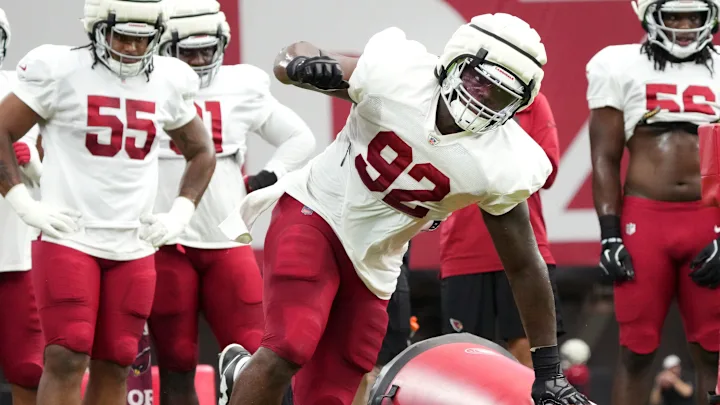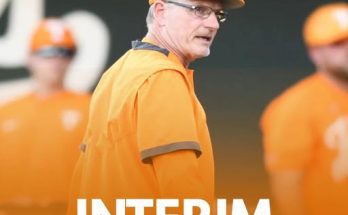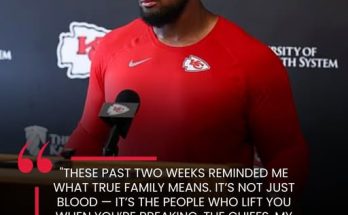The St. Louis Cardinals are at a critical juncture as they approach the 2025 offseason. Following consecutive seasons without postseason appearances—a rarity for the franchise—the organization faces pivotal decisions that will shape its future trajectory. Reflecting on past missteps, it’s imperative that the Cardinals avoid repeating errors that have hindered their progress.
A Look Back: Recent Offseason Missteps
In the aftermath of a disappointing 2023 season, the Cardinals sought to revamp their pitching staff by signing veterans Lance Lynn, Kyle Gibson, and reliever Keynan Middleton. These moves were intended to stabilize the rotation and bullpen, aiming for a swift return to contention. However, the 2024 season culminated in an 83-79 record, falling short of playoff aspirations. Consequently, the organization declined the 2025 options for Lynn, Gibson, and Middleton, signaling a shift towards flexibility and a reevaluation of long-term strategies.
The Perils of Short-Term Fixes
The reliance on aging veterans as quick fixes has proven problematic. While experienced players can offer leadership and stability, over-reliance on them without a balanced infusion of young talent can lead to stagnation. The 2024 season exemplified this, as the veteran-laden pitching staff failed to deliver the consistency needed for a postseason run. This underscores the necessity for a more sustainable approach that prioritizes both immediate performance and future development.
Embracing a Youth Movement
Recognizing the need for change, the Cardinals have indicated plans to increase playing time for younger players in the upcoming season. This strategy aims to develop homegrown talent, fostering a new core that can lead the team in the coming years. By providing prospects with substantial major league experience, the organization can better assess their potential and build a roster that combines youthful energy with seasoned expertise.
Strategic Financial Management
Financial flexibility is paramount in executing a successful rebuild. The decision to decline options on veteran pitchers not only reflects a shift in roster construction but also a commitment to prudent financial management. Allocating resources towards player development, scouting, and strategic acquisitions will be crucial. Investing in young talent and avoiding burdensome contracts can prevent future financial constraints, allowing for more agility in addressing team needs.
Avoiding Complacency in Player Development
A critical error the Cardinals must avoid is complacency in player development. Assuming that prospects will naturally progress without adequate support can derail their growth. Implementing robust development programs, providing mentorship, and ensuring consistent playing time are essential components in nurturing young talent. By actively engaging in their development, the organization can maximize the potential of its prospects, leading to a more competitive roster.
Transparent Communication and Leadership
Effective communication within the organization and with the fan base is vital during transitional periods. Clearly articulating the team’s direction, goals, and the rationale behind decisions fosters trust and patience. Leadership must be transparent about the challenges and timelines associated with a rebuild, setting realistic expectations while demonstrating a commitment to returning to contention.
Learning from the Past to Build a Resilient Future
The Cardinals’ recent experiences offer valuable lessons in the importance of strategic planning, balanced roster construction, and financial prudence. By avoiding the pitfalls of short-term fixes and embracing a comprehensive development strategy, the organization can lay the foundation for sustained success. This offseason presents an opportunity to course-correct, ensuring that past mistakes are not repeated and that the Cardinals emerge as a formidable contender in the seasons to come.
Investing in the Right Free Agents and Trade Targets
While the Cardinals must avoid making the same mistake of signing aging, past-their-prime veterans as stopgap solutions, this doesn’t mean they should completely shy away from the free-agent market. Instead, they need to be more calculated and aggressive in acquiring impact players who can contribute meaningfully over the next several years.
A primary focus should be on acquiring frontline pitching—a glaring need for the team over the past few seasons. The inability to develop or acquire ace-caliber pitchers has hurt the Cardinals’ ability to compete with powerhouse teams like the Braves, Dodgers, and Phillies. In recent years, the front office has relied too heavily on mid-tier arms rather than investing in a dominant rotation leader.
Possible Free-Agent and Trade Options
This offseason provides the Cardinals with an opportunity to finally fix their rotation with a true No. 1 starter. They must look beyond the bargain bin and consider premium options like:
- Blake Snell (if still available) – A Cy Young winner with dominant strikeout potential.
- Dylan Cease (trade candidate) – A younger, high-upside pitcher the Cardinals should be aggressive in acquiring.
- Corbin Burnes – If the Brewers entertain trading him, the Cardinals should explore the possibility of a blockbuster deal.
- Shōta Imanaga or Yoshinobu Yamamoto (previously available Japanese pitchers) – If any similar international talent emerges, the team must seriously consider investing.
The front office needs to think big and act decisively rather than settling for another round of underwhelming short-term deals.
Balancing Roster Construction
Another issue the Cardinals must address is the redundancy in their position player depth, particularly in the outfield and middle infield. The team has had a logjam of players who fit similar profiles—solid but not necessarily game-changers.
- Jordan Walker is a future cornerstone but still needs time to develop defensively.
- Nolan Gorman and Brendan Donovan are productive bats, but neither has fully solidified himself as an everyday star.
- Tommy Edman, while valuable, is somewhat expendable if younger players can step up.
- Dylan Carlson has yet to break out as once expected.
- Masyn Winn is the future at shortstop but is still a work in progress.
The Cardinals must consolidate some of their depth into a trade for impact talent rather than stockpiling players who might not be everyday starters on a championship-caliber team.
Avoiding the “Just Good Enough” Mentality
For too long, the Cardinals have operated under a strategy of being good enough to compete for a Wild Card but not truly built to win a championship. This has resulted in consistent, but uninspiring, playoff appearances that end early. The front office must change its mindset from merely aiming for consistent 85-90 win seasons to actually building a roster that can compete with the game’s elite.
This means:
- Investing in elite talent, not just depth.
- Committing to developing and trusting young stars.
- Making bold moves instead of “safe” ones.
- Building a sustainable winner rather than relying on aging veterans.
The Importance of Managerial Stability and a Unified Vision
Beyond roster decisions, the Cardinals must ensure they have strong leadership in the dugout and front office.
- Is Oliver Marmol the right manager to lead this transition? If the front office believes in him, he needs full support to implement changes.
- The analytics department and scouting team must be aligned with ownership’s vision.
- John Mozeliak and the front office must be proactive, not reactive, in addressing weaknesses.
Final Thoughts: A Franchise-Defining Offseason
The Cardinals cannot afford to make the same mistakes as in previous offseasons. If they fail to make substantial improvements again, they risk falling into a prolonged period of mediocrity—something that hasn’t happened in decades.
This offseason presents a rare opportunity for the organization to redefine itself and set a new course for sustained success. Will they seize it, or will they continue down the path of short-sighted, half-measure roster decisions?



